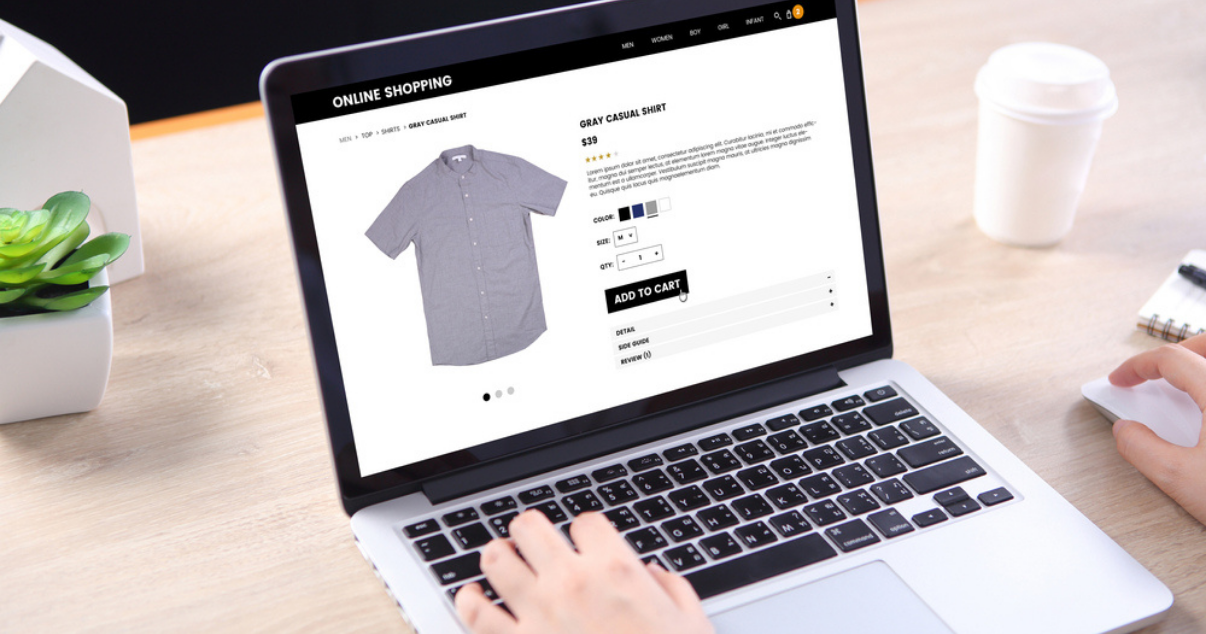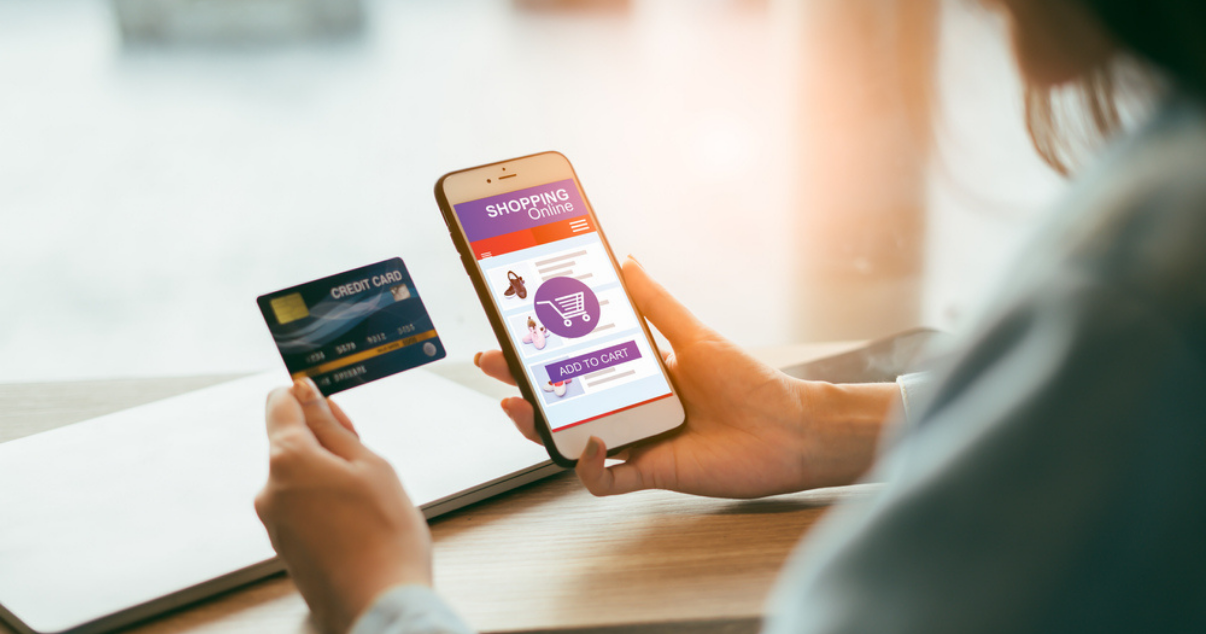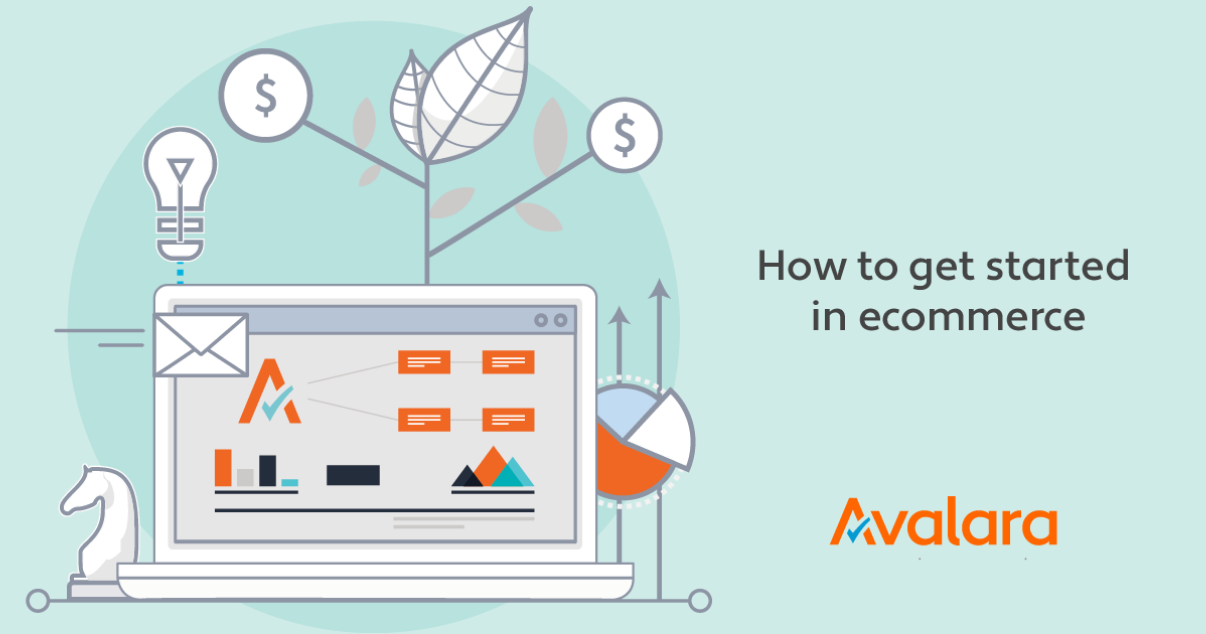In an ongoing effort to contain COVID-19, local and state governments have extended or reissued orders for nonessential businesses and establishments to close their doors. These orders, combined with the lack of consumers making their way into physical stores, are having a major impact on small B2C businesses across the country. Many brick-and-mortar small businesses have determined the only way to remain open and serve customers is to transition operations to online ecommerce, which is something several businesses are doing for the first time.
For brick-and-mortar businesses struggling to figure out how to bring their stores online and follow a direct to consumer strategy during this unprecedented time, there are several key considerations. Here are seven steps that can be taken to quickly establish an ecommerce presence and continue reaching customers.

1. Set up an online platform
The first step for any business owner considering ecommerce is to research the platforms available to determine which best fits the needs of your business and your budget. There are a number of cost-efficient ecommerce providers that allow small B2C businesses to get up and running in a matter of minutes. A full list of the ecommerce providers Avalara works with can be found here.
When evaluating ecommerce and billing platforms, there are a number of factors to consider, including multiplatform operations, shipping and fulfillment features, pricing models and payment processing, security measures, API integrations, and compliance capabilities. If your business is transitioning to online for the first time, simplicity in functionality both on the back end and customer-facing features will likely be top of mind. Most ecommerce platform providers have several different plans designed to best fit your B2C business. When deciding which plan is best for you, keep the following in mind:
- How many products do you plan on selling? If you’re not planning to sell a lot of products, a simpler plan with lower rates may be suitable. There is no product limit for many providers’ main plans.
- What features do you need? If you’re looking to have a site that enables customers to view your products and make purchases, a simpler plan is likely the best fit. However, many businesses find it’s beneficial to include additional features that contribute to positive customer experiences, like customer loyalty plans, abandoned cart recovery, bundle pricing, and more. Some more complex use cases will benefit from a billing platform connected to their E-commerce provider where they can configure more complex billing options such as customized subscriptions and different pricing models.

Note that during this time, your business may not have the luxury of conducting extensive research on multiple platforms, and instead may need to rely on something that works now. Fortunately, there are providers that offer out-of-the-box functionality that will enable you to get your basic store up and running quickly.
"For business owners who have invested their energy into building lasting physical storefronts, the process of moving online doesn’t have to be intimidating, even when the future of your brand relies on your ability to launch and drive online sales. Ecommerce platforms, like BigCommerce, are designed with out-of-the-box functionality and application integrations to ensure that even the most novice sellers can get their stores online quickly, and offer the tools to help their business grow now and for years to come. In these uncertain times, having an online presence is an essential way to stay connected to your customers and continue driving revenue. While it may feel overwhelming to move online so quickly, this is an easy business decision that will pay long-lasting dividends." —Meghan Stabler, VP of Product Marketing and Communications, BigCommerce
Once you’ve identified a platform that works best for you, the next step is to register your domain name and get your account set up —all of which can be done from any connected device. Once you’re in, it’s time to start customizing the features of your website, which begins in step #2.

2. Determine which products you’ll sell online
Given the necessary timeliness of your efforts to transition store functions to ecommerce, it’s important to prioritize which products you’ll be selling online, so your most profitable and in-demand products are available for purchase as you launch your direct to consumer website. It can feel like you need to have every product in your store available immediately, but by prioritizing the most popular products first, you can get your online operations up and running then begin fulfilling orders while adding additional inventory.
3. Diversify your payment methods
It's important to decide on the online payment processing system and the payment gateways you’ll be using. Setting up your accepted payment methods is a crucial part of converting a browser into a buyer. Consider which payment methods are the most commonly used and accommodate for the largest number of customers. Fortunately, most ecommerce providers offer integrations with the most common payment methods like Visa, Mastercard, PayPal, Apple Pay, and more. If you’re still unsure of which payment methods you’ll need to accept, a good rule of thumb is to incorporate the same payment methods you offer through your in-store point-of-sale system. If you are also using a billing platform, you may also have the option to connect with various payment gateways, allowing you to offer a broad range of payment methods — even international ones.

4. Set up your shipping and returns functions
Once you’ve outlined your products and set up payment methods, the next step is to ensure you can get products to customers. Shipping, fulfillment, and returns can be a major roadblock for many small BC2 businesses making the transition from brick-and-mortar to online. A key feature that should be included in your ecommerce platform capabilities is shipping options, including drop shipping, printable shipping labels, and pre-setup shipping providers.
If you’re fulfilling orders yourself, consider using a shipping app like ShipStation, which helps automate shipping for merchants of all sizes, and offers small businesses discounted shipping rates with USPS, UPS, and FedEx.

If you’re concerned about how to fulfill orders or that your current warehouse might be unable to fulfill orders, consider using an outsourced provider, like ShipBob, which processes orders for thousands of ecommerce brands. It’s also worth pointing out that your storefront can serve as a temporary fulfillment center during this time: It serves the dual benefit of getting products to your customers quickly while simultaneously ensuring all that in-store inventory doesn’t go to waste. This is a model that works quite successfully for big-box retailers like Target.
Shipping costs are often something brick-and-mortar retailers haven’t had to consider when it comes to their pricing models, so be mindful of a product’s shipping cost and be sure it’s clearly displayed in the shopping cart. Be transparent about shipping costs throughout the shopping experience and avoid the risk of having customers abandon their cart if they discover a shipping cost “gotcha” at checkout.

5. Consider how you'll manage sales tax compliance
Most states now require online sellers to register then collect and remit sales tax once their sales in the state surpass a certain economic nexus threshold (e.g., $100,000 in sales or 200 transactions annually). Therefore, online sellers need an ecommerce platform that applies the correct sales tax rate to every transaction and supports timely filing and remittance.
Many ecommerce platforms rely on tax rate tables. Yet rate tables often align rates to ZIP codes, and ZIP codes don’t map to sales tax jurisdictions. Furthermore, frequent changes to rates and product taxability rules can quickly render rate tables obsolete: In 2019 alone, there were more than 34,000 tax rate and taxability changes in the U.S., along with 115,000 sales tax holiday rule updates.
After calculating and collecting sales tax, online sellers need to file returns and remit payments on a monthly, quarterly, or annual basis. Companies with sales tax obligations in multiple states typically have to manage multiple deadlines, multiple forms, and a host of filing rules and requirements.
When tackled manually, sales tax collection, remittance, and filing is both time consuming and error prone. Implementing a seamless solution that pulls transaction data from a POS system or accounting system is more efficient and more accurate. And it's more necessary now that 43 states and the District of Columbia enforce economic nexus.

Online sellers must monitor sales into all economic nexus states to know how close they are to meeting the economic nexus threshold: Some states require remote sellers to register for a sales tax permit and start collecting sales tax as soon as the threshold is crossed (i.e., on the very next invoice).
When evaluating an ecommerce platform, choose one that supports real-time sales tax rate and product taxability updates, seamless filing and remittance, reporting capabilities that can track sales and monitor economic nexus thresholds, and even international taxation.
6. Plan your online marketing strategy with social media
Perhaps one of the most important steps in this transition is communicating how your business will now be selling. This is where social media posts and advertising come into play to be certain that customers are in the know about your online strategy. On the upside, most brick-and-mortar shops are already using social media to market to their customers. However, it’s critical that B2C businesses over-communicate the change in operations to ensure regular customers are aware of the new selling channel, and to capitalize on the expanded customer audience you can now reach.

Social media can be used to promote your new online presence and as a platform to advocate for your business’s distinguishing factors and unique value-add. Use this opportunity to tell your story and highlight the characteristics that make your small business stand out to consumers. Not only are consumers turning to social media to learn where they can continue making regular purchases during this time, but they’re especially inclined to support small B2C businesses.
Another option, when using social media, is to go beyond your marketing efforts and consider using social selling platforms as a complement to your newly formed online store. In today’s social network-driven society, social media platforms are no longer just an avenue to increase brand awareness, but an opportunity to connect with customers and make sales in the social threads customers are already sifting through.
Comment selling platforms, like CommentSold, are blending content and commerce to convert social media comments into sales and automatically invoice shoppers from their social media timelines. By leveraging this method of “headless commerce,” or separating the front end and back end of an ecommerce application, businesses can easily combine their social media marketing and online selling for quick sales conversions and limited friction throughout the browsing and shopping experience. Through social selling capabilities, direct to consumer businesses can save customers time they would otherwise have to spend sifting through websites to find the items that best fit their wants and needs.
“Captivating shoppers online can be increasingly difficult as more B2C businesses turn to online during this time, so reaching customers where they are is more important than ever before. Social selling platforms allow retailers to connect directly with customers via live video and product content on Facebook and Instagram. Creative tools, like instant comment purchasing and real-time live sales events, can help retailers grab and keep their online customers’ attention.” —Andy Smith, COO, CommentSold

7. Preview, test, and publish your store
The final step to bringing your store online is to ensure every function of your site is operational. Double-check each function by asking yourself these questions:
- Does my checkout work? Make sure orders work across all payment methods and payment gateways; your shipping options and charges are correct and visible; the items and price in your cart are correct; discounts/promotions apply correctly; and tax is calculated once shoppers enter their location.
- Is content presented in a professional manner? Proofread all copy and double-check that spelling and grammar are correct across the website. It’s also important to check images, videos, and other forms of multimedia across platforms to make sure they don’t interfere with the customer experience.
- Does my store work on various channels and internet browsers? Consumers want to access products online whenever they choose from whatever device they are on. Testing your online site for functionality across channels is important to ensure that you’re not turning away potential customers who are unable to access your site.
At a time when more and more small B2C businesses are at risk of closing their doors due to uncontrollable circumstances, ecommerce provides a viable alternative that, if executed on quickly and decisively, allows business owners to keep their operations up and running. Small direct to consumer businesses can take advantage of this unexpected time to explore new selling opportunities and ways to further serve their customers — something they might have otherwise not had the opportunity to do. Fortunately, technology that exists today allows even the smallest of businesses to quickly ramp up online operations, reaching a broader audience, and incorporating all the necessary functions needed to provide a comprehensive, frictionless online shopping experience.
Get the free guide for more details: How to get started in ecommerce.
A Special thanks to our colleagues at Avalara for this guest post!

